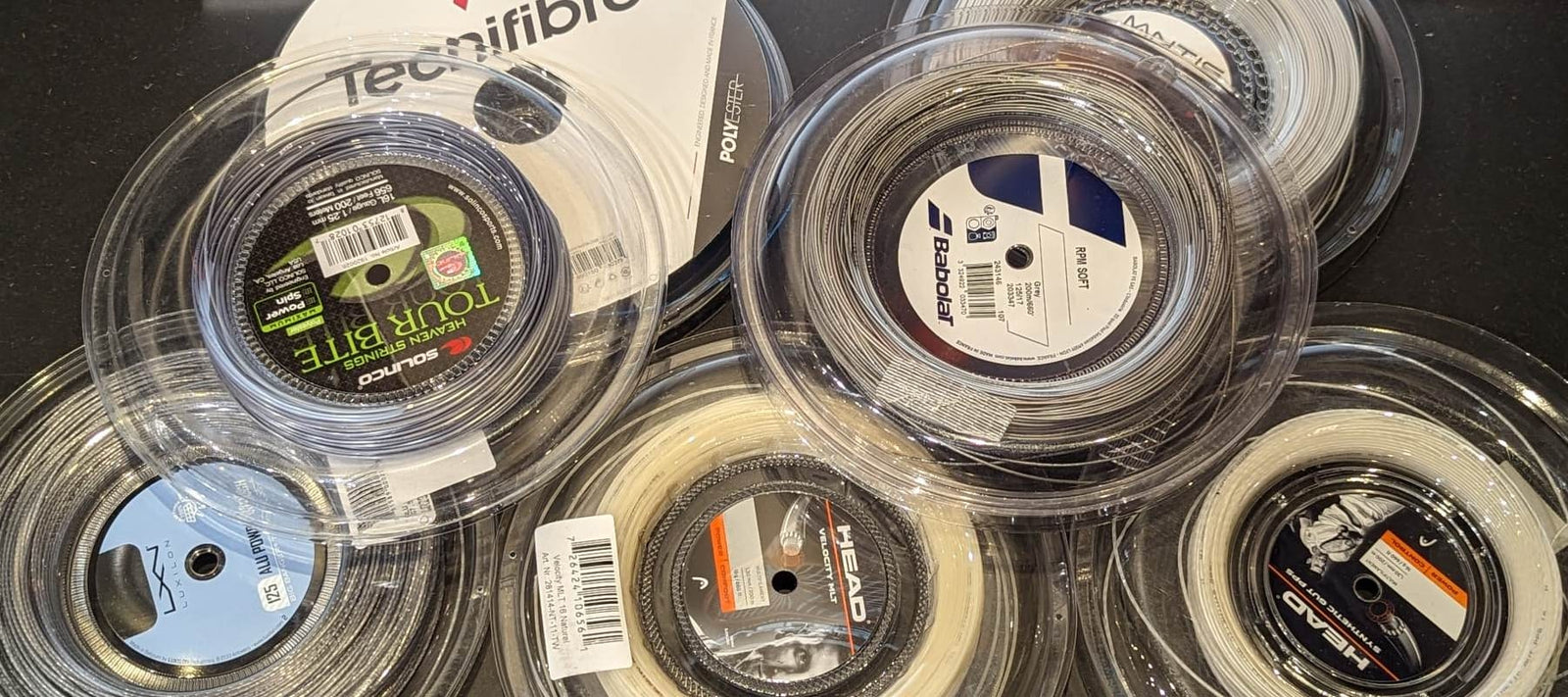THE 4 MAIN TYPES OF TENNIS STRING
1. SYNTHETIC GUT
Perfect for club level players, synthetic gut strings are a nylon monofilament tennis string. Synthetic gut is an inexpensive type of string - providing good levels of power, spin, control and feel without specialising in any key area.
2. NATURAL GUT
The original type of tennis string, natural gut's prominence in the tennis world dates back to the 19th century. Natural gut is a premium string, providing great feel, spin and power - however it is also the least durable and most expensive option.
3. MULTIFILAMENT
Designed to provide great comfort through every shot, multifilament tennis strings are the perfect tennis string for players suffering from tennis elbow. Multifilament strings were created to replicate the feel of natural gut strings at an affordable price - producing a softer feel upon contact with the ball than other options - however, this does come at the cost of the string's durability.
4. POLYESTER
Most commonly used amongst professional tennis players, polyester monofilament strings produce great spin and control on every single shot. A highly durable option, one downside of this string is the lack of power it produces.
WHAT STRING SHOULD YOU CHOOSE?
Although there is no definitive answer to what string you should play with, understanding key factors will help you to get the best possible pick.
First of all, you should consider what level of tennis you play at. For club players, softer synthetic gut or natural gut strings can be great, while competitive and team players will use harder, polyester strings more often.
One factor to consider is the player's playing style. Players who volley frequently may prefer strings that provide expert comfort and feel on contact with the ball - for example, natural gut strings. In contrast, players who play with lots of topspin will be likely to prefer strings that enhance this - for example polyester strings.
Another important factor is the gauge of a string; this is the measurement of a string's diameter. In other words, its how thick your strings are. In the UK, string gauge is often measured in millimetres, with a higher gauge number resulting in a thicker string. Thicker gauge strings will be more durable whilst thinner gauge strings generate greater levels of topspin.
CAUTION: AN IMPORTANT MISTAKE TO AVOID
One key mistake we have commonly seen is club players playing with hard polyester strings strung at high tension - which can result in higher chances of arm injury. We recommend that if you move to a harder string type, ask for a 10-15% reduction in string tension to avoid this problem.
Check out our video on types of strings below!
Interested in a restring? Find out more below:
Demo Rackets and Restring Services - String Sports – stringsports.co.uk

